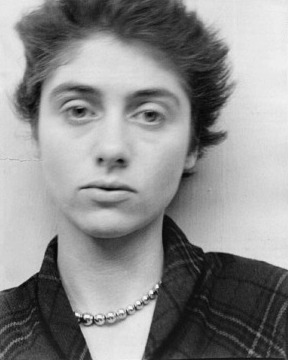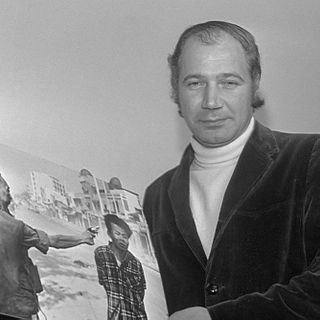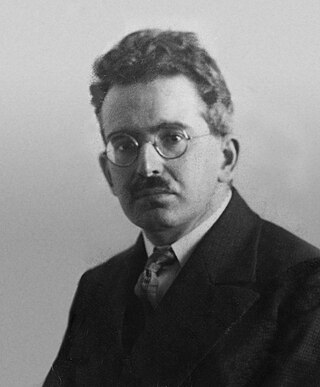
Triumph of the Will is a 1935 German Nazi propaganda film directed, produced, edited and co-written by Leni Riefenstahl. Adolf Hitler commissioned the film and served as an unofficial executive producer; his name appears in the opening titles. It chronicles the 1934 Nazi Party Congress in Nuremberg, which was attended by more than 700,000 Nazi supporters. The film contains excerpts of speeches given by Nazi leaders at the Congress, including Hitler, Rudolf Hess and Julius Streicher, interspersed with footage of massed Sturmabteilung (SA) and Schutzstaffel (SS) troops and public reaction. Its overriding theme is the return of Germany as a great power with Hitler as its leader. The film was produced after the Night of the Long Knives, and many formerly prominent SA members are absent.

Diane Arbus was an American photographer. She photographed a wide range of subjects including strippers, carnival performers, nudists, people with dwarfism, children, mothers, couples, elderly people, and middle-class families. She photographed her subjects in familiar settings: their homes, on the street, in the workplace, in the park. "She is noted for expanding notions of acceptable subject matter and violates canons of the appropriate distance between photographer and subject. By befriending, not objectifying her subjects, she was able to capture in her work a rare psychological intensity." In his 2003 New York Times Magazine article, "Arbus Reconsidered", Arthur Lubow states, "She was fascinated by people who were visibly creating their own identities—cross-dressers, nudists, sideshow performers, tattooed men, the nouveaux riches, the movie-star fans—and by those who were trapped in a uniform that no longer provided any security or comfort." Michael Kimmelman writes in his review of the exhibition Diane Arbus Revelations, that her work "transformed the art of photography ". Arbus's imagery helped to normalize marginalized groups and highlight the importance of proper representation of all people.

Roland Gérard Barthes was a French literary theorist, essayist, philosopher, critic, and semiotician. His work engaged in the analysis of a variety of sign systems, mainly derived from Western popular culture. His ideas explored a diverse range of fields and influenced the development of many schools of theory, including structuralism, anthropology, literary theory, and post-structuralism.

Jean Baudrillard was a French sociologist, philosopher and poet, with interest in cultural studies. He is best known for his analyses of media, contemporary culture, and technological communication, as well as his formulation of concepts such as hyperreality. Baudrillard wrote about diverse subjects, including consumerism, critique of economy, social history, aesthetics, Western foreign policy, and popular culture. Among his most well-known works are Seduction (1978), Simulacra and Simulation (1981), America (1986), and The Gulf War Did Not Take Place (1991). His work is frequently associated with postmodernism and specifically post-structuralism. Nevertheless, Baudrillard had also opposed post-structuralism, and had distanced himself from postmodernism.

Susan Lee Sontag was an American writer, critic, and public intellectual. She mostly wrote essays, but also published novels; she published her first major work, the essay "Notes on 'Camp' ", in 1964. Her best-known works include the critical works Against Interpretation (1966), On Photography (1977), Illness as Metaphor (1978) and Regarding the Pain of Others, as well as the fictional works The Way We Live Now (1986), The Volcano Lover (1992), and In America (1999).

Against Interpretation is a 1966 collection of essays by Susan Sontag. It includes some of Sontag's best-known works, including "On Style," and the eponymous essay "Against Interpretation." In the latter, Sontag argues that the new approach to criticism and aesthetics neglects the sensuous impact and novelty of art, instead fitting works into predetermined intellectual interpretations and emphasis on the "content" or "meaning" of a work. The book was a finalist for the Arts and Letters category of the National Book Award.

Illness as Metaphor is a 1978 work of critical theory by Susan Sontag, in which she challenged the victim-blaming in the language that is often used to describe diseases and the people affected by them.

Sally Mann HonFRPS is an American photographer known for making large format black and white photographs of people and places in her immediate surroundings: her children, husband, and rural landscapes, as well as self-portraits.

Edward Thomas Adams was an American photographer and photojournalist noted for portraits of celebrities and politicians and for coverage of 13 wars. He is best known for his photograph of the summary execution of Nguyễn Văn Lém, a Viet Cong prisoner of war, for which he won the Pulitzer Prize for Spot News Photography in 1969. Adams was a resident of Bogota, New Jersey.

On Photography is a 1977 collection of essays by American writer Susan Sontag. The book originated from a series of essays Sontag published in the New York Review of Books between 1973 and 1977.

"The Work of Art in the Age of Mechanical Reproduction" (1935), by Walter Benjamin, is an essay of cultural criticism which proposes and explains that mechanical reproduction devalues the aura (uniqueness) of a work of art, and that in the age of mechanical reproduction and the absence of traditional and ritualistic value, the production of art would be inherently based upon the praxis of politics. Written during the Nazi régime (1933–1945) in Germany, in the essay Benjamin presents a theory of art that is "useful for the formulation of revolutionary demands in the politics of art" in a society of mass culture.
Visual ethics is an emerging interdisciplinary field of scholarship that brings together religious studies, philosophy, photo and video journalism, visual arts, and cognitive science in order to explore the ways human beings relate to others ethically through visual perception. Historically, the field of ethics has relied heavily on rational-linguistic approaches, largely ignoring the importance of seeing and visual representation to human moral behavior. At the same time, studies in visual culture tend to analyze imagistic representations while ignoring many of the ethical dimensions involved. Visual ethics is a field of cross-fertilization of ethics and visual culture studies that seeks to understand how the production and reception of visual images is always ethical, whether or not we are consciously aware of this fact.

AIDS and Its Metaphors is a 1989 work of critical theory by Susan Sontag. In this companion book to her Illness as Metaphor (1978), Sontag extends her arguments about the metaphors attributed to cancer to the AIDS crisis. Sontag explores how attitudes to disease are formed in society, and attempts to deconstruct them.

Where the Stress Falls, published in 2001, is the last collection of essays published by Susan Sontag before her death in 2004. The essays vary between her experiences in the theater to book reviews.

Anna-Lou Leibovitz is an American portrait photographer best known for her portraits, particularly of celebrities, which often feature subjects in intimate settings and poses. Leibovitz's Polaroid photo of John Lennon and Yoko Ono, taken five hours before Lennon's murder, is considered one of Rolling Stone magazine's most famous cover photographs. The Library of Congress declared her a Living Legend, and she is the first woman to have a feature exhibition at Washington's National Portrait Gallery.
Truth claim, in photography, is a term Tom Gunning uses to describe the prevalent belief that traditional photographs accurately depict reality. He states that the truth claim relies on both the indexicality and visual accuracy of photographs.

Camille Anna Paglia is an American academic, social critic and feminist. Paglia has been a professor at the University of the Arts in Philadelphia, Pennsylvania, since 1984. She is critical of many aspects of modern culture and is the author of Sexual Personae: Art and Decadence from Nefertiti to Emily Dickinson (1990) and other books. She is also a critic of contemporary American feminism and of post-structuralism, as well as a commentator on multiple aspects of American culture such as its visual art, music, and film history.

Freud: The Mind of the Moralist is a book about Sigmund Freud, the founder of psychoanalysis, by the sociologist Philip Rieff, in which the author places Freud and psychoanalysis in historical context. Rieff described his goal as being to "show the mind of Freud ... as it derives lessons on the right conduct of life from the misery of living it."

The Vulture and the Little Girl, also known as The Struggling Girl, is a photograph by Kevin Carter which first appeared in The New York Times on 26 March 1993. It is a photograph of a frail famine-stricken boy, initially believed to be a girl, who had collapsed in the foreground with a hooded vulture eyeing him from nearby. The child was reported to be attempting to reach a United Nations feeding centre about a half mile away in Ayod, Sudan, in March 1993, and to have survived the incident. The picture won the Pulitzer Prize for Feature Photography award in 1994. Carter took his own life four months after winning the prize.

Photography in Sudan refers to both historical as well as to contemporary photographs taken in the cultural history of today's Republic of the Sudan. This includes the former territory of present-day South Sudan, as well as what was once Anglo-Egyptian Sudan, and some of the oldest photographs from the 1860s, taken during the Turkish-Egyptian rule (Turkiyya). As in other countries, the growing importance of photography for mass media like newspapers, as well as for amateur photographers has led to a wider photographic documentation and use of photographs in Sudan during the 20th century and beyond. In the 21st century, photography in Sudan has undergone important changes, mainly due to digital photography and distribution through social media and the Internet.


















